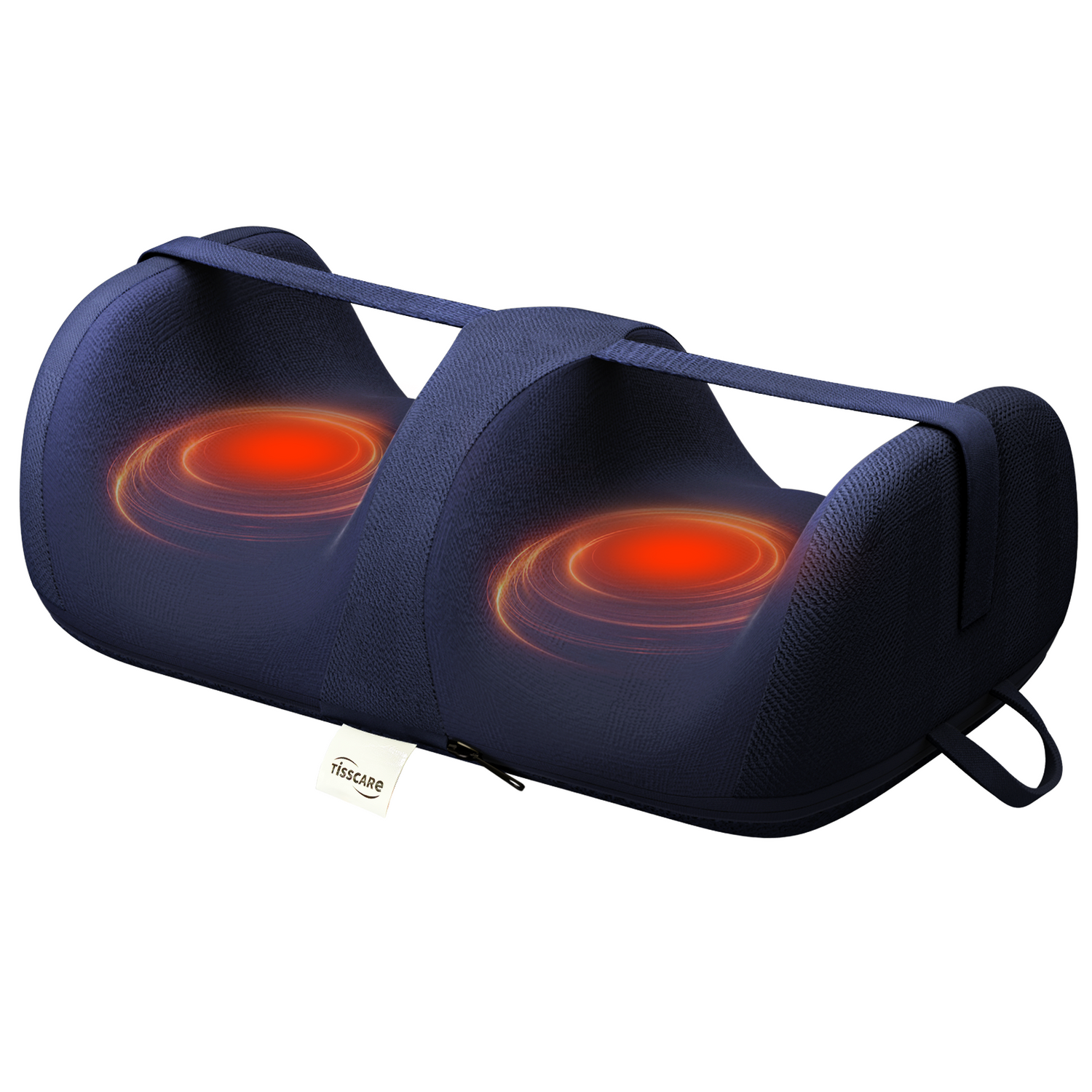Introduction
After a long day at work, have you ever noticed deep marks on your ankles after removing your shoes? Or perhaps you wake up in the morning feeling like your feet are unusually heavy, making your shoes feel tight? These could be subtle but significant signs of swelling, an issue that has become increasingly common in modern society. Factors such as prolonged sitting, lack of exercise, and an imbalanced diet contribute to this condition, making it a widespread concern for urban dwellers. More than just an aesthetic problem, persistent swelling could indicate underlying health issues. This article will take an in-depth look at the causes and potential dangers of swelling while also introducing how the best foot calf massager—an innovative technological solution—can effectively alleviate symptoms, helping you regain light and comfortable legs.
Understanding Swelling: Causes and Health Risks
Swelling, medically known as abnormal interstitial fluid accumulation, manifests primarily as skin indentation when pressed, with slow recovery. This phenomenon is particularly common in the lower limbs and is mainly caused by poor blood circulation and lymphatic drainage. When we maintain the same position for an extended period—whether sitting or standing—venous blood flow back to the heart is hindered, leading to fluid retention in the tissue spaces.
The formation of swelling is usually associated with various factors:
- Physiological factors: Prolonged immobility, a high-sodium diet, hormonal changes during menstruation in women, and hot weather conditions that cause blood vessels to expand.
- Pathological factors: Potential underlying health issues, such as heart, kidney, or liver dysfunction, as well as vascular disorders like venous insufficiency.
Long-term swelling may result in a range of health complications:
- Increased risk of varicose veins, leading to unsightly "worm-like" blood vessels on the legs.
- Tissue fibrosis, causing skin discoloration, hardening, and other structural changes.
- Higher probability of deep vein thrombosis (DVT), which can be life-threatening in severe cases.
- Reduced joint mobility, significantly impacting overall quality of life.
The Science Behind Foot and Calf Massagers
To combat swelling, modern technology offers a revolutionary solution: foot and calf massagers. These devices mimic professional massage techniques while integrating cutting-edge technology to improve blood circulation and facilitate lymphatic drainage. Finding the best foot calf massager can make a huge difference in effectively addressing swelling and discomfort.
The core technologies used in mainstream massagers include:
- Air Compression Massage System: This system inflates and deflates air chambers sequentially to simulate kneading and relaxation, helping push fluid toward the heart.
- Rolling Techniques: These target specific acupuncture points and meridians to enhance microcirculation.
- Heat Therapy: Warming functions expand blood vessels, boost metabolism, and alleviate muscle tension.
- Adjustable Intensity Levels: Users can customize massage modes and intensity to suit their individual comfort and needs.
Clinical studies have shown that consistent use of high-quality foot and calf massagers for 4–8 weeks can lead to:
- A 50–70% reduction in swelling severity.
- An increase of 30–45% in venous return speed.
This non-drug intervention method is particularly suitable for individuals prone to swelling, including office workers, pregnant women, and the elderly.
How to Choose the Right Massager
With an overwhelming variety of massagers on the market, consumers often struggle to make the right choice. Here are some key factors to consider when selecting the best foot calf massager:
- Coverage Area: A good massager should effectively target the feet, ankles, and calves. The soles of the feet contain numerous reflex zones, while the calves play a crucial role in venous return. Both require thorough stimulation.
- User Experience: Is the material skin-friendly and breathable? Is the device noisy during operation? Is it easy to use and control? Is cleaning and maintenance hassle-free?
- Safety Certifications: Check for relevant medical certifications, especially for individuals with varicose veins or vascular diseases.
For those seeking an excellent option, the Tisscare foot calf massager is a top choice. It combines deep-kneading technology, adjustable intensity levels, and heat therapy to provide a professional-grade massage experience at home. Designed for optimal relaxation and improved circulation, this device is perfect for anyone looking to alleviate swelling and fatigue effectively.
Usage Tips and Precautions
To maximize the benefits of a massager, proper usage is essential:
- Best Time to Use: It is recommended to use the device in the evening after a warm shower, as muscles are relaxed and circulation is at its peak. Each session should last 15–30 minutes, starting at a lower intensity for beginners.
- Optimal Positioning: While using the massager, elevate your legs at a 45-degree angle to enhance venous return. Placing a soft pillow under the calves can further improve comfort and effectiveness.
- Usage Contraindications: Avoid during the acute phase of venous inflammation; with open wounds or skin infections; in cases of severe heart disease; malignant tumors; or during pregnancy (consult a doctor before use).
- Maintenance Tips: Regularly clean the contact areas with alcohol wipes to ensure hygiene, and store the device in a dry, dust-free environment.
A Holistic Approach to Managing Swelling
While massagers are highly effective, long-term swelling management requires a holistic approach, incorporating:
Dietary Adjustments:
- Limit sodium intake to no more than 5g per day.
- Increase potassium-rich foods (e.g., bananas, spinach) to balance electrolytes.
- Consume adequate protein to maintain plasma osmotic pressure.
Exercise Recommendations:
- Office Micro-Movements: Perform ankle pump exercises (moving toes up and down) for 3–5 minutes every hour.
- Daily Workouts: Engage in activities like swimming or cycling, which exert minimal stress on the lower limbs.
- Avoid Prolonged Inactivity: Avoid standing or sitting cross-legged for extended periods.
Additional Measures:
- Wear medical-grade compression socks during the day.
- Elevate the legs when resting.
- Schedule regular professional lymphatic drainage massages.
Healthy Lifestyle Habits:
- Avoid wearing excessively tight clothing or stockings.
- Maintain a healthy body weight.
- Ensure sufficient sleep.
- Limit alcohol intake and quit smoking.
Conclusion: Technology Empowering Healthier Living
In today's health-conscious era, home wellness devices such as foot and calf massagers are transforming how we approach self-care. By bringing professional therapy techniques into our homes, these devices make health management more accessible and effective. While swelling is a common issue, it should neither be ignored nor feared. With proper knowledge, the best foot calf massager, and a balanced lifestyle, you can restore the lightness in your legs and embrace each day with renewed energy.
Remember, investing in health is always the smartest choice. A high-quality foot calf massager is more than just an appliance—it is a meaningful gift for yourself and your loved ones. Let's take proactive steps toward wellness, leveraging technology to safeguard our health and create a vibrant future together.


